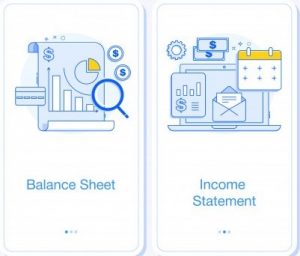Now you have entered into the ACA Professional Level exams, multiple choice questions are a thing of the past. These exams are a HUGE step up from Certificate exams. To put yourself in the best position for these ACA exams ensure you have grasped the basic understanding from Certificate Level. Much of the content will be recapped so do not worry too much if you forget some technical knowledge. As mentioned in Part 1, all these ACA exams will include at least 5%, sometimes more, of ethics content but this will stem from Certificate Assurance similar to the ICAEW ACA Ethics Learning Programme.
Below I shall talk through each of the Professional Level exams’ content, ACA exam structure and timing. If you would like to know how hard I found these Professional Level exams with exam statistics and my difficulty ranking for all 15 ACA exams, click here.
Check out my YouTube video if you would prefer watching to reading!
As in Part 1, I will discuss the exams in the order I sat them. I sat the first three ACA Professional Level exams 7-9 outlined below in March 2019 and the last three in September 2019. To clarify, I did indeed sit my first 12 ACA exams in the first year of my graduate scheme. I would be lying if I said this was not intense but that being said, I did find it manageable overall. Read this blog to find out why and to see the exact timeline of my sittings. That blog should also help you if you have questions around the order of sitting these Professional Level exams.

Again, refer to Part 1 for details of credit for prior learning/exemptions, access arrangements and attempts. I will however mention here that ACA Professional Level exams can only be sat in certain exam sitting windows. These run quarterly in March, June, September or December. This can be up to your employer regarding your bookings and how many you sit in each quarterly sitting. This was the case for myself however I do know some of you may have the choice. I have provided some advice here within the “three ACA exams at once” section.
Note: Business planning: Insurance (BPI) and Business Planning: Banking (BPB) modules cannot be sat during March sittings. This is likely to be due to these exams having less students than the most common Business Planning: Taxation.
ACA Professional Level Exams (55% pass mark)
7) Financial Accounting and Reporting (FAR)
This is the longest exam in duration of all the ACA Professional Level exams. All others are a duration of 2.5 hours but this exam is 3 hours. Yes, 3 hours. If you are initially as shocked as I was it will make more sense when you come to study for this exam. You will probably actually be left wishing there was more time. Having a good basic understanding from the ACA Certificate Level Accounting module helps here.
For the first question in this exam the student must demonstrate their ability to prepare single entity financial statements based on the scenario. This exam also requires a lot more explanation of accounting treatments. Do not be too alarmed as there are some accounting standards books permitted in the exam. These definitely helped me with the explain question. The final question involves preparing consolidated statements based on the scenario. Marks for these sections may vary.

There are two different types of the FAR exam, International Financial Reporting Standards (IFRS) or UK Generally Accepted Accounting Principles (UK GAAP). Your employer will decide which exam you sit based on your clients, mine was IFRS. IFRS and UK GAAP are essentially financial reporting frameworks/accounting standards. Where IFRS would state ‘revenue’, UK GAAP would use the terminology ‘turnover’. There are some bigger financial statement presentational differences but overall the exams achieve the same result.
It is also worth noting that these exams regardless of the type (FAR of UK GAAP) count as an attempt. If you fail IFRS and switch to UK GAAP you would only have three attempts left to pass, not four. You cannot also sit the second version after passing the other. Additionally, this exam is partly open book where you are permitted to take in the provided accounting standard books with you. This can definitely help with the explain question.
If you would like my insight into how to pass FAR, click here.
8) Audit and Assurance (AA)
if you have a job in audit this exam is much easier. Although I did, I sat my exams very quickly. In fact, I sat the first 9 exams in six months (no idea how), including AA. This meant I had little on the job experience so I had to learn the theory as I was new to auditing.
As mentioned but if you missed it, this exam and all the below ACA Professional Level exams are 2.5 hours long. This exam also includes an enormous open book but the exam is quite time pressured so you may not get much time to use this. Now there is the digital bookshelf, you will not have the same joys of having to carry this massive brick around.

The first 20 marks are made up of a variety of short questions on any AA topic. For example, the audit opinion that would be given on a certain scenario. These massively vary and are hard to prepare for but are in a way general knowledges bullet point style questions. The longer questions are then around planning and performing engagements, concluding and reporting engagements and legal, professional and ethical issues can be mixed in. Again, marks vary exam to exam.
Note: There have been some changes to AA in 2021 as there has been the introduction of the new data analytics software. You can find my tips for how to pass ACA AA here.
9) Tax Compliance (TC)
This exam is an extension of PTX from Certificate Level module. A lot of the tax computations learnt prior are still relevant but of course, this exam is not multiple choice. The examiner wants to see you can calculate certain taxes based on the scenario given. The good thing about this exam compared to PTX is that you can of course now pick up method marks.
This exam follows the same structure of five questions: ethics; indirect taxes (VAT); capital taxes (including inheritance tax); corporation tax; and income tax and NICs.

I found this exam to be the hardest exam of the ACA Professional Level exams. Others may not agree with me on this one but there is a LOT to remember. It is one exam I was never confident with and always felt as though I had failed. Although there is a tax book of rates that can be taken into the exam, there is more to it. This exam does need a lot of practice to get the tax computations and proformas to stick. That being said, I did weirdly enjoy studying for this exam #mathsgeek.

10) Financial Management (FM)
Certificate MI knowledge is helpful for this exam. What is good about this exam is that it is always structured in the same way. I would say it is the most repetitive exam in the sense that the questions do not differ too much besides the numbers. However, there are a lot of wordy answers required in this exam that should not be underestimated. This exam is surprisingly almost half wordy answers.
The first 35 mark question will usually be on investment decisions and valuations. This is essentially calculating using the net present valuation model whether an investment decision is profitable for shareholders. It may also involve making a replacement decision on assets. There are discount tables provided in this exam that can help for this question.

The next 35 marks is on financing options. A big part of this is calculating the weighted average cost of capital (WACC). It could also be assessing whether debentures or a rights issue is a better option for a company based on their current financial gearing.
The remaining 30 marks is around managing financial risk. This involves calculating the value of foreign exchange receipts or payments based on certain hedging techniques. An example of this is hedging using a forward contract. This topic also covers interest rate hedging and swaps.
I will be putting together revision notes that are helpful for managing financial risk. Ensure you subscribe to find out more in due course. In the meantime, find my tips how to pass FM here.

11) Business Strategy and Technology (BST)
This exam technical knowledge is literally BTF from Certificate Level and not much extra. All the models are carried forward and relevant to this exam. Marks do vary in this exam. Although it is quite a wordy exam there can be a fair few calculations involved too. That all being said, I found this exam to be the easiest ACA Professional Level exam.

There will be a strategic analysis question and this tends to include some financial performance analysis. I did not know it at the time but this can be a taster for the Advanced Level Case Study exam. The other two exam questions are on strategic choice and the implementation of strategy. These are difficult to outline what could come up as it really does depend on the scenario in the question.
Again join my journey as I will share tips on how to pass BST!
12) Business Planning: Taxation (BPT)
Before I go into more detail for this exam, it is worth nothing there are variations to this exam. You can either sit BPT, Business Planning: Banking (BPB) or Business Planning: Insurance (BPI). This module choice depends on your clients and your employer will decide which is most relevant for you. For example, if you work in financial services audit you will most likely sit BPB.
Many students will say BPT is the hardest ACA exam. I actually did not think this was the case but I did find it to be very time pressured. In TC you have to perform the tax computations and memorise rules but in BPT there is much less of this but more tax advising. There is even more new content in the exam.
However, the good part is that this exam is completely open book. Unlike FAR, AA and TC where you can only take in ICAEW resources with you, BPT allows ANY material to be taken in. This does however highlight the amount of application required in this exam.

The structure of this exam is quite consistent in terms of the syllabus areas. It will cover taxation of corporate entities, owner managed businesses and personal taxation. That being said, this exam has so many different possible combinations of tax laws, topics and scenarios that each exam seems to vary. You will really need a good open book file to nail this exam. This is something I will help you with in a later blog post.

As I sat BPT, I will not be able to give much more information on the other two. However, ICAEW have provided a thorough breakdown of these exams from page 74 onwards. See this pdf if you want even more information for the other ACA Professional Level exams too.
As mentioned above for the FAR variations, they count equally towards an exam attempt. You cannot pass one and then sit another version either.
How to Pass ACA Professional Level Exams
Each exam is quite different so I will be producing more exam specific blogs for this. However, here are some general tips that may help:
- The ICAEW Question Bank needs to be your best friend for these exams. Really make use of the practise questions that are available to you following the structure for each exam outlined above. For example, for FAR a consolidation a day keeps the resit away!
- A good grasp of the technical knowledge alone is not enough. These exams require a lot of application. Make sure you are tailoring your exam answers to the question and scenario given
- Make use of the open book materials too as they can be very handy if used correctly. There is a lot to remember for these exams but do not make your life harder than it needs to be
- Timing is key for these exams, especially BPT. I truly believe it is timing what makes these exams much harder. Practise to exam timing nearer to the exam to make sure you can nail it
ACA Professional Level Exams Wrap Up
I would say these ACA Professional Level exams are definitely a step up. This can be gathered straight from Part 1 and 2 of these blog posts alone. However, if you put the work in you should definitely be ok. As mentioned, if you would like to see how I ranked these exams in terms of ACA difficulty from hardest ACA exam to easiest, click here.
Part 3 Advanced Level will be released in two weeks so keep an eye our and join the journey for email notifications.
If you would like to connect with other ACA students, whether that be aspiring/Certificate/Professional/Advanced/qualified feel free to join this ACA LinkedIn group. Here you can find links to ACA Telegram groups (essentially WhatsApp with phone numbers) to really interact!
Comment below your thoughts or if there is any other questions you would like answers to – if you found this blog helpful, feel free to buy me a coffee or join my journey for more!


18 comments